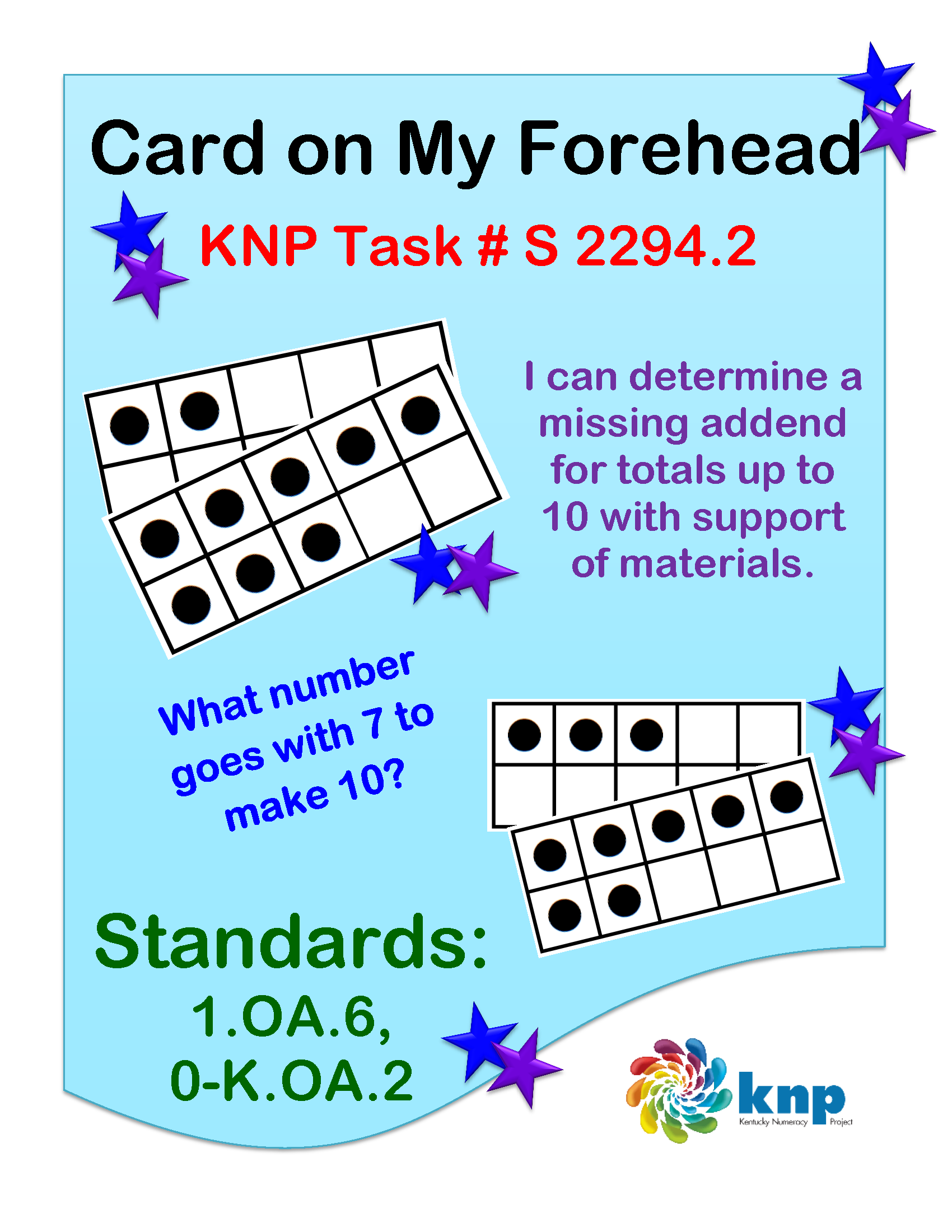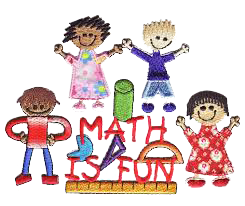“Card on My Forehead”
KNPIG ID #S 2294.2
What's this activity about?
This fun activity lets kids practice making pairs to get a total of ten in a very silly way. Your child will hold a ten frame card to their forehead. They have to guess how many squares are filled in and you will try to help by telling them what number you could pair it with to make ten. Next, you’ll switch places. Your child will get practice in two different ways! Using the ten frames and using mental math strategies to figure out the missing addend.
What materials do we need?
10 frame cards 1 to 10 (see link)

How do we play?
Shuffle the ten frame cards and put face down in a stack.
Player one will start by picking up a card and without looking at it, places it on their forehead so only Player two can see the number on the card. Player will look at the card and say the other number that will combine to make ten. Then number on the card and the number player two says are two addends that should equal 10. Then player one will have to figure out what number is on their card without taking it off of their head. After player one guesses, they can check their card to see if they got it correct.
If player one gets it correct, they get a point. If player 2 gave the wrong missing addend, then player one gets a point.
Switch roles and play again. The player with the most points wins.
Where’s the Math?
This fun activity lets kids practice making pairs to get a total of ten in a very silly way. Your child will hold a ten frame card to their forehead. They have to guess how many squares are filled in and you will try to help by telling them what number you could pair it with to make ten. Next, you’ll switch places. Your child will get practice in two different ways! Using the ten frames and using mental math strategies to figure out the missing addend.
Things to Think About:
As you play this with kids, remember to BE PATIENT. Sometimes it’s hard not to help them along if they are struggling. Giving children time to think will help them develop more critical thinking skills and deeper understanding. Instead of telling them the answer, ask your child some possible ways they might find the solution. This may sound like them starting with a number and “counting on” to get the other number. They might also use addition facts that they already are comfortable with to find the solution. There are many different ways to find the same answer. Knowing which strategy your child is comfortable using makes it easier for you to explain how they can solve the problems. This is also a good opportunity to talk about making addition and subtraction number sentences. If they figure out their number is three when you give them the clue seven, you could ask “What does that sound or look like as a number sentence? Start with three, and then add seven. That equals ten. 3+7=10.” You could also write it as a subtraction sentence. This shows them different ways quantities relate to one another. Having a better understanding of quantities now will make math further in their education easier to understand.
Feedback
Send us your thoughts and ideas about these activities. Email the KCM

